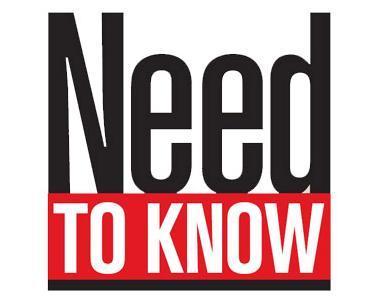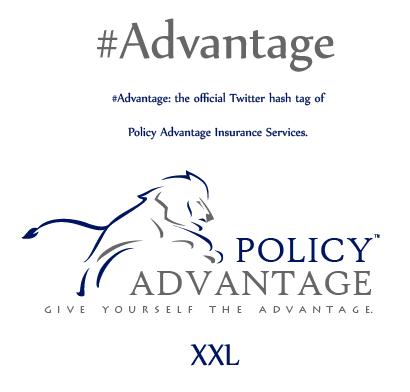#ADVANTAGE: What’s the Long Term Price-Tag of Medicaid Expansion? (8/9/2014)
Welcome back to another edition of our #Advantage blog segment. This is where we answer the questions that we get on social media. As some of you know, our official Twitter hashtag is #Advantage and you can catch up with us here: www.twitter.com/Advantage (or at @Advantage).
This week we had a question from Jill Pederson (@Jill_Ped) up in Oregon. If you’ve followed healthcare reform closely, you’ll know that Medicaid programs were significantly expanded because of the Obamacare law. Expansion is based on FPL (or Federal Poverty Level). Here was Jill’s question:
@policyadvantage what's the long term price tag of Medicaid expansion?
— Jill Pedersen (@Jill_Ped) August 10, 2014
Let’s start with a short history: back in the summer of 2012 the Supreme Court of the United States upheld the “individual mandate,” and also ruled that individual states have the option to either “opt in” or “opt out” of expanding their state Medicaid program. As of 2014, 27 states (including the District of Columbia) have expanded their Medicaid programs. That’s over half of the nation (here’s a great infographic from Families USA).
The question is: What’s the long term price tag of Medicaid expansion? Well if you know much about Medicaid, you’ll understand that it’s a joint state/federal program. So depending on the state you’re in, the price-tag is going to vary… sometimes considerably. Here two of the bigger common factors that will affect costs:
- Utilization of the Medicaid program (ie: the number of people eligible for Medicaid in your state).
- Whether-or-not your state decided to expand Medicaid under the federal reform law.
- …plus others.
And if you’d really like an in-depth explaination, here are the details from the Kaiser Family Foundation: Why does Medicaid Spending Vary Across States: A Chartbook of Factors Driving State Spending. The Kaiser Family Foundation utilizes the “Urban Institute’s Health Insurance Policy Simulation Model (HIPSM)” to provide national and state-by-state estimates of the impact of the ACA on federal and state Medicaid costs.
Here’s the answer to Jill’s question regarding the long-term price of Medicaid for individual states (based on HIPSM’s model): “The Medicaid expansion and other provisions of the ACA would lead state Medicaid spending to increase by 76 billion dollars over 2013-2022 (an increase of less than 3%). Some states will reduce their own Medicaid spending as they transition already covered populations to the ACA expansion.”
It’s the federal government that’s going to take on most of the bill regarding the expansion. The federal government will pick up 100% of the cost of covering people made newly eligible for Medicaid during the first three years (2014-2016), and no less than 90% on a permanent basis. According to the same HIPSM model: “Federal Medicaid spending (from 2013-2022) would increase by 952 billion dollars (a 26% increase).”
Here are four important points:
A) What do the proponents of Medicaid expansion say?: Those in favor say that it will reduce the amount of uninsured people, while reducing costs. Many formerly uninsured will be covered, and the general public will take on less of a burden when having to compensate for unpaid medical bills of the uninsured.
B) What do the opponents of Medicaid expansion say?: Those opposed say it’s too expensive, over-reaching, and unaffordable. In order to pay the bill (especially at the federal level), taxes will have to go up. Additionally, some are still skeptical about whether-or-not raising taxes will even be enough to pay the bill.
C) What’s going to happen?: That’s the billion dollar question. Obviously you can speculate, but you can’t predict the future. Optimistically you want to say it’s going work, but technically is still “TBA” (To Be Announced).
D) What IS happening?: Generally speaking, those states that have expanded Medicaid in 2014 are seeing some short-term success. The question though is long-term: will it be affordable and sustainable? Again, TBA.
Thanks for stopping by at our “#Advantage” blog segment dedicated to questions from our social media friends. We hope you found our information to be valuable.
We’ll continue to roll-out answers as questions come in. Don’t forget to hash-tag “#Advantage” at Twitter, and visit our official tag here: www.twitter.com/Advantage.
Check back at our blog to get further information about funding healthcare. Also, please share with your friends, clients, colleagues, and family. Here are a few of our other information outlets:
Home Page: https://policyadvantage.com
Twitter: http://www.twitter.com/policyadvantage
Facebook: http://www.facebook.com/policyadvantage
YouTube: http://www.youtube.com/policyadvantage
Pinterest: http://www.pinterest.com/policyadvantage
Word Press (you are here): http://www.policyadvantage.wordpress.com








